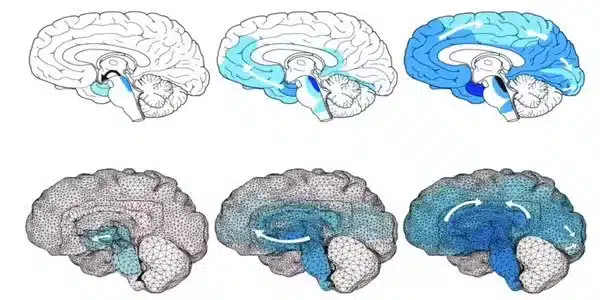Dementia is a broad term that refers to a group of neurodegenerative disorders that impair cognitive function, memory, and behavior. The presence of toxic proteins in the brain is one of the key characteristics of many dementia-related diseases, such as Alzheimer’s disease.
A new study suggests that new insights into the spread of damaging proteins that accumulate in the brains of people with Alzheimer’s disease may hold the key to halting the disease’s progression. Researchers have discovered that synapses, which send essential signals through the brain, are also transporting toxic proteins known as tau around the brain.
Tangles are large clumps of the protein tau that form in brain cells and are one of the hallmarks of Alzheimer’s disease. As these tangles spread through the brain during the disease there is a decline in brain function.
We have known for over 30 years that tangles spread through the brain during Alzheimer’s disease, but how they spread has remained a mystery. Neuron death occurs wherever tangles appear in the brain, contributing to cognitive decline. Stopping the spread of toxic tau is a promising strategy for putting an end to the disease.
Professor Tara-Spires Jones
The study, led by the University of Edinburgh, focused on synapses, which allow the flow of chemical and electrical messages between brain cells and are essential for healthy brain function. Alzheimer’s disease attacks synapses, and the loss of these synapses strongly predicts decreased memory and thinking abilities.
Scientists examined over one million synapses from 42 people in the study, using powerful microscopy techniques to visualize proteins within individual synapses. The researchers discovered small clumps of the protein tau, known as tau oligomers, within the synapses of Alzheimer’s patients.

Tangles of tau oligomers were seen inside both ends of the synapse — from the brain cell sending signals and the brain cell receiving signals. In a mouse model of the disease, the oligomers jumped from one side of the synapse to the other, spreading the toxic tau through the brain. Lowering oligomeric tau at synapses may be a promising strategy to stop disease progression in future, experts say.
Alzheimer’s disease is the most common type of dementia, affecting approximately 900,000 people in the United Kingdom. This number is expected to increase to nearly 1.6 million by 2040. There is currently no cure and it can cause severe memory loss.
“We have known for over 30 years that tangles spread through the brain during Alzheimer’s disease, but how they spread has remained a mystery,” said lead researcher Professor Tara-Spires Jones of the UK Dementia Research Institute at the University of Edinburgh. Neuron death occurs wherever tangles appear in the brain, contributing to cognitive decline. Stopping the spread of toxic tau is a promising strategy for putting an end to the disease.”














